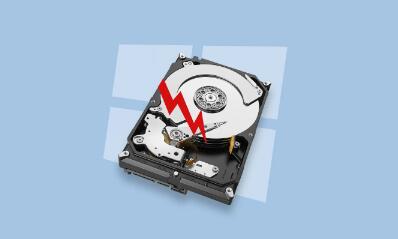Data loss can be a nightmare, whether it’s due to accidental deletion, formatting, or drive failure. Fortunately, restoring deleted data from a hard disk drive (HDD) is often possible if the data hasn’t been overwritten.
When files are deleted from a hard drive, the operating system doesn’t immediately erase the data. Instead, it marks the space as available for new data. This means that the deleted files may still be recoverable until that space is overwritten. Understanding this process is crucial for effective recovery.
Preliminary Steps
Stop Using the Drive: Immediately cease any use of the drive where data was lost to prevent overwriting.
Assess the Situation: Determine how the data was lost. Was it accidental deletion, formatting, or a hardware issue? This can guide your recovery approach.

Recovery Options
1. Check the Recycle Bin
Before proceeding with complex recovery methods, check the Recycle Bin:
Windows: Open the Recycle Bin, locate the deleted files, right-click, and choose “Restore.”
Mac: Open the Trash, find the files, right-click, and select “Put Back.”
If the files are not in the Recycle Bin, proceed to the next steps.
2. Using File History (Windows)
If you have enabled File History:
Go to the folder where the deleted files were originally stored.
Right-click the folder and select “Properties.”
Navigate to the “Previous Versions” tab.
Select a version before the deletion and click “Restore.”
3. Utilizing Backup Solutions
If you regularly back up your data using software or cloud services, restore from these backups:
Windows Backup: Open Control Panel > Backup and Restore, and follow the prompts.
Mac Time Machine: Connect your backup drive, enter Time Machine, and find the files to restore.
Data Recovery Software
If preliminary methods fail, data recovery software is your best bet. Below are some popular options:
1. Recuva (Windows)
Download and Install: Get Recuva from its official site.
Run the Software: Open Recuva, choose the type of file you want to recover (or all files), and select the drive to scan.
Scan Options: Opt for a deep scan for better chances of recovery.
Preview and Restore: After scanning, select files to recover and save them to a different drive.
2. EaseUS Data Recovery Wizard (Windows/Mac)
Installation: Download the software and install it on a different drive.
Launching the Tool: Open the program, select the drive to scan, and initiate the process.
Scanning: The software will provide quick and deep scan options.
Recover Files: After scanning, preview recoverable files and save them to a safe location.
3. Stellar Data Recovery (Windows/Mac)
Install: Download and install Stellar on a different drive.
Choose Recovery Type: Select the type of data you want to recover or a specific drive.
Scanning Process: Initiate a quick or deep scan.
Preview and Save: Choose files to restore and save them to another drive.
Manual Recovery Methods
If software solutions don’t work, you can explore manual recovery options, especially if the drive is not physically damaged.
1. Using Command Prompt (Windows)
Open Command Prompt as Administrator.
Type chkdsk X: /f (replace X with your drive letter).
This checks for and fixes file system errors, potentially recovering lost data.
2. File Recovery from Disk Image
For advanced users, creating a disk image can allow for deeper recovery techniques:
Use a tool like dd (on Linux) to create a disk image.
Use recovery software on the disk image instead of the original drive to avoid overwriting data.
Addressing Hardware Failures
If the HDD is physically damaged, recovery may require professional services:
Signs of Failure: Clicking sounds, failure to boot, or unusual vibrations indicate serious issues.
Professional Recovery Services: These can be expensive but may be necessary for critical data. Look for reputable services with good reviews.
Preventative Measures
To avoid future data loss:
Regular Backups: Use built-in tools or third-party software to back up data frequently.
Cloud Storage: Consider using cloud services for important files.
Data Recovery Tools: Keep reliable data recovery software installed for emergencies.
Restoring deleted data from a hard disk drive is achievable through a variety of methods, from simple checks to advanced software solutions. Understanding the underlying processes and preparing for future incidents are crucial. Always prioritize backups and be cautious with file management to minimize the risk of data loss.
About us and this blog
Panda Assistant is built on the latest data recovery algorithms, ensuring that no file is too damaged, too lost, or too corrupted to be recovered.
Request a free quote
We believe that data recovery shouldn’t be a daunting task. That’s why we’ve designed Panda Assistant to be as easy to use as it is powerful. With a few clicks, you can initiate a scan, preview recoverable files, and restore your data all within a matter of minutes.

 Try lt Free
Try lt Free Recovery success rate of up to
Recovery success rate of up to









